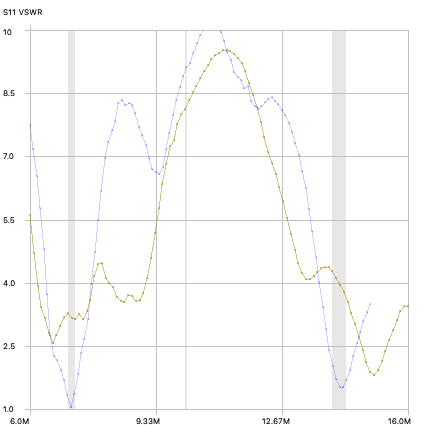Unfortunately for the third year running at almost exactly the same time of year my antenna has stopped working. I noticed that the ATU was struggling to get the SWR down to where I would expect so I connected up my NanoVNA and noticed a bizarre trace.

Having had a quick look at the antenna it seems to be the same issue, corrosion of the wire that makes the legs of the antenna, I’d used significant quantities of Silkaflex sealant to try to avoid the water getting in so that’s a bit disappointing! After having a think about the issues and a chat with some of the club members it was also suggested that the issue could be water in the balun.
Given that the balun is a bit long in the tooth and already had a small crack protected by gaffa tape I may replace it.
Until I can sort things out I’m now off the air which is very frustrating. Like last year if feels as if it has happened just as I’m getting the hang of CW, last year it was around my first couple of QSOs, this year it’s as I’ve started getting in the swing of a few QSOs each week.
While I’m off the air I’m using my spare time to read Bill Meara’s book SolderSmoke ‘Global Adventures in Wireless Electronics’ it’s a really good read and I might post a bit of a review on it at a later date.
